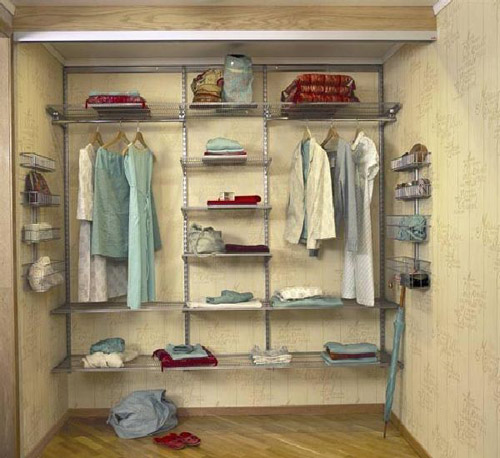|
查看原文
Like many fashion-loving young women on a budget, I went crazy over Beijing's clothing markets. "You can bargain a pair of cargo pants down to $5? Get a skirt for $3 and a scarf for just $1.50?" I had never before seen such an enormous amount of inexpensive clothing.
Friends and I became regulars at the Silk Market, the original Wudaokou Clothing Market and the Zoo Whole-sale Clothing Market. After my first year in China, I had picked up enough new clothes and fashion accessories to fill two huge suitcases.
Now, eight years later, only three pieces of clothing from the time are still around - a winter coat, a sweater and a summer skirt. The rest have either faded, torn, shrunk, stretched, fallen out of fashion or just became too uncomfortable to wear.
In hindsight, I realized that I had bought impulsively, even taking clothes that didn't zip properly because I liked their designs. I was swayed by low prices and cared more about buying quantity than quality.
In 2012, according to data from the China National Garment Association, the country produced 43.6 billion pieces of clothing. The world's biggest garment exporter, with a third of the slice of the pie, China also sees mountains of low-cost clothing enter the domestic market.
The flow of new, affordable designs can be irresistible to fashionistas, but a big wardrobe isn't always better. I'm reminded of the primacy of quality whenever I think about the oldest piece in my closet. It's a white eyelet blouse from a designer's ready-to-wear line, which my mother picked out at a Manila department store during my college freshman year. I balked at the price tag of about $35, but 18 years and three countries later, I still wear it.
When I began reporting on sustainable lifestyles a couple of years ago, I started to ask myself a few questions before buying new clothes. "Can you see yourself in this outfit five to 10 years from now? Is it something that will last? Will it go well with the things you already own?"
These are the same ideas behind having a "capsule wardrobe" - a collection of a few essential pieces that can be mixed and matched, worn from day to night and updated with key items. The concept became popular in the West in the mid-1980s, following the release of American designer Donna Karan's "7 Easy Pieces", which consisted of a bodysuit, skirt, blouse, coat, leggings, jacket and dress.
The capsule wardrobe's emphasis is on having a small yet versatile clothing collection, which will survive fashion trends and washing cycles.
Chinese consumers, who only rediscovered modern fashion following the country's economic reforms three decades ago, want to buy more - not less. People such as Wang Mingming, who have adopted capsule wardrobes in the face of so much bargain clothing, are a rarity. In 2009, the resident of Ningbo, Zhejiang province, simplified her wardrobe to seven sets of clothing per season. She makes sure not to wear an outfit twice in the same week and uses shoes and bags to freshen her look, but the 32-year-old has basically been wearing a handful of items again and again for years. The oldest piece she owns dates back to 2001.
Wang's decision has not only helped her put together a quality wardrobe, but it has also improved her quality of life. She wanted to devote more energy to exercising, reading and relaxing, and not having to keep up with fashion trends has freed up her time and money.
Inspired by such stories, I've toyed with the idea of also living on a capsule wardrobe. If I were to have only "7 Easy Pieces", then I'd have to get rid of 150 garments. Since I've now gone for seven months without buying any new clothes, I'm confident this goal will be within reach in this lifetime.
By Tiffany Tan ( China Daily )
|
查看譯文
像許多愛好時尚的年輕女性節(jié)省費用那樣����,我非常喜歡北京的服裝市場�?�!澳憧梢詫⒁粭l工裝褲討價還價低至5美元嗎����?花3美元買一條裙子�����,1.50美元買一條圍巾嗎�?”我從未見過如此大量的便宜服裝���。
我和朋友們成為秀水街��、原來的五道口服裝市場和動物園服裝批發(fā)市場的?�??����。在中國住了一年以后���,我添置的新衣服和時尚飾品可以裝滿兩個大號行李箱。
八年后的現(xiàn)在�����,當(dāng)時的衣服只剩三件常穿——一件冬天的外套��,一件毛衣和一條夏天的裙子�。其余的或褪色�,或扯破��,或縮水���,或撐大�����,或過時���,或只是穿的不太舒服。
事后看來��,我意識到當(dāng)時的沖動購物��,甚至買的一些衣服裁剪并不合適�����,但僅僅因為喜歡它們的設(shè)計而把它們買下來�����。我是很易受低價左右的人��,更關(guān)注的是購買的數(shù)量而不是質(zhì)量���。
中國服裝協(xié)會的數(shù)據(jù)顯示�,2012年中國生產(chǎn)了436億件衣服���。作為世界上最大的服裝出口國�,其出口量占世界總出口量的三分之一�,與此同時中國也有大量的低成本服裝進入國內(nèi)市場。
新穎且價格實惠的服裝設(shè)計對于時尚達人來說是不可抗拒的��,但一個大的衣櫥并不總是好事����。每當(dāng)我想起櫥柜里那件最舊的衣服,我都會提醒自己質(zhì)量是第一�����。這是從一位設(shè)計師的成品系列中購買的一件白色網(wǎng)眼女式襯衫����,那時我上大學(xué)一年級,是我母親在一家馬尼拉百貨商店挑選的。標(biāo)價約35美元�����,我當(dāng)時猶豫不決����,但歷經(jīng)18年、游歷三個國家之后��,我仍然穿著它�。
當(dāng)幾年前我開始報道可持續(xù)生活方式時,我開始在購買新衣服之前問自己幾個問題���?�!澳阍谖磥?到10年都能穿這件衣服嗎��?它耐穿嗎���?它和你已有的衣服能搭配得起來嗎?”
這些都是掩藏在“膠囊衣櫥”之后的想法——這里面是少量必備衣服�����、可以混合搭配,一天到晚都可以穿��,款式也不會太過時����。二十世紀(jì)八十年代中期�����,隨著美國設(shè)計師唐納?卡蘭(Donna Karan)發(fā)布她的“簡潔7件”理念��,上述觀念在西方變得流行���,這一理念倡導(dǎo)的“7件”為:一件緊身衣���、一條裙子、一件女裝襯衫����、一件外套、一件夾克衫�����、一條褲子及一件晚禮服。
“膠囊衣櫥”的重點是收藏的衣服少但具有多功能性��,能夠在時尚潮流的變遷和多次洗滌后留存下來����。
30年前,隨著中國的經(jīng)濟改革����,中國消費者才重新發(fā)現(xiàn)現(xiàn)代時尚,他們想購買的更多而不是更少�����。不過也有王明明(音)這樣的人實踐了“膠囊衣櫥”理念��,然而這種人是很罕見的���。2009年�,浙江寧波的王明明簡化了她的衣櫥至每季七套服裝�����。她確保不在一個星期內(nèi)將同一套衣服穿兩次�����,并利用鞋子和手袋搭配出新鮮感。但32歲的她���,幾年來基本上就是把這幾件衣服一穿再穿����。她穿的衣服中���,最舊的一件是2001年買的。
王明明采用“膠囊衣櫥”的決定不僅幫助她組建了一個有質(zhì)量的衣櫥�����,而且也提高了她的生活質(zhì)量���。她想把更多的精力用來鍛煉�、閱讀和放松��,沒有跟上時尚潮流使她得以空出時間�、節(jié)省金錢。
受到這樣故事的鼓舞�,我曾半開玩笑地設(shè)想以“膠囊衣櫥”為生���。如果我只有這“簡單7件”,那我就必須得處理掉150套衣服���。我已經(jīng)七個月沒有買任何新衣服了����,我相信這一目標(biāo)將在我一生中實現(xiàn)����。
(中國日報記者 Tiffany Tan)
掃一掃,關(guān)注微博微信
 
|


